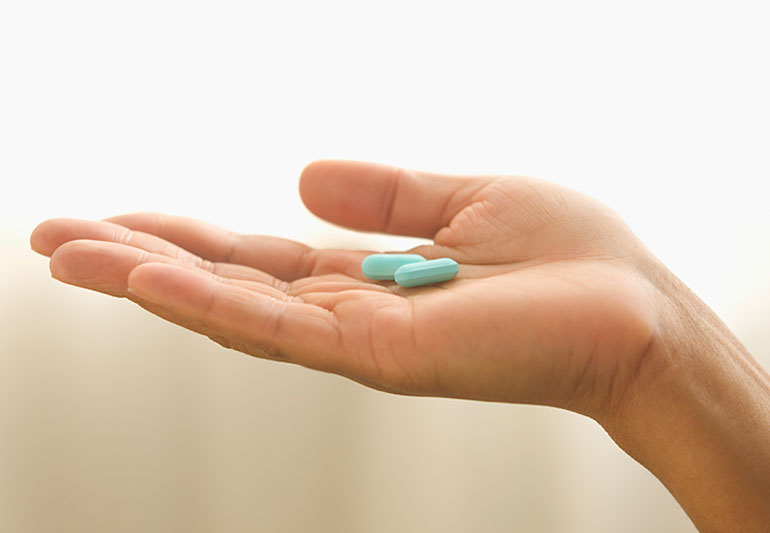

When your doctor asks if you’re allergic to penicillin, do you say yes? Lots of people do.
Penicillin is a commonly-prescribed antibiotic that helps fight off a variety of infections caused by bacteria — from ear aches and sinus infections to pneumonia and meningitis. For a few people, however, it causes an allergic reaction that may include hives, rashes, itchy eyes, fever, shortness of breath, and swollen lips, tongue or face.
About 10% of the population reports a penicillin allergy, but less than 1 in 10 of those people are truly allergic. Moreover, about 80% of those who were once allergic to the drug lose their sensitivity to penicillin after 10 years. So why do so many people think they’re allergic when they’re not? And how can you know for sure?
“Penicillin is the most frequent allergy reported by patients seen at Cleveland Clinic,” says allergy and immunology specialist David Lang, MD. And that is sometimes a problem.
“When a doctor sees you have a label of penicillin allergy, it is often a barrier for getting the most appropriate care in terms of antibiotic selection,” he says.
Reasons you might think you’re allergic (when you’re not)
There are two primary reasons why you may mistakenly think you’re allergic.
1. You had an allergic reaction to something else. You may have noticed a reaction in the past while taking a penicillin-type antibiotic that was not actually caused by the penicillin.
For example, a doctor may give antibiotics for an upper-respiratory infection. Sometimes an infection, particularly in children, also causes a rash, Dr. Lang says. Once you experience symptoms, you get an antibiotic, a rash occurs, and you mistakenly think the penicillin caused the rash.
2. You had other adverse side effects. An adverse reaction to penicillin may lead you to mistakenly believe that you are allergic. For example, penicillin may upset your stomach. While this is a common side effect, it does not mean you’re allergic.
“There are also times when people have coincidental adverse experiences,” says Dr. Lang. For example, you may have a series of headaches or unpleasant symptoms while you are taking the antibiotic, but something else is causing those problems.
Is there a downside to avoiding penicillin?
Yes, says Dr. Lang. You may miss out on the most effective treatment for your condition.
Your doctor must find alternative antibiotics if you have a penicillin allergy. And alternative antibiotics often:
- Are more costly.
- Pose a greater risk for adverse effects.
- Are less effective.
“A penicillin allergy needs to be challenged,” he says. “When we perform a formal allergy evaluation with penicillin skin testing, the results are negative in about every 9 out of 10 patients we evaluate. The negative skin testing implies that penicillin can be taken without an increased risk for allergic reaction compared with the general population.”
How does the testing work?
Skin testing for a penicillin allergy is commonly performed and can be done safely — even in patients who are critically ill or who have had serious reactions to penicillin, Dr. Lang says.
1.Validating the test
To ensure that your skin reacts normally, a nurse will apply both a saline solution and a histamine solution. If your skin reacts to the saline, that means your skin is too sensitive and the test cannot be interpreted.
The histamine solution should cause a red, raised, itchy area, similar to a mosquito bite. If there is no reaction, your skin test may not show an allergy even if you have one, and for this reason the test cannot be interpreted.
If your skin does not react to the saline, but reacts to the histamine, this validates the skin test: Your skin has the capacity to react to a potential allergen.
2. Testing for penicillin allergy
At the same time, a nurse places liquid drops of penicillin on your skin and scratches through the liquid so that it gets underneath the top layer of your skin. A reaction that is similar to a mosquito bite should occur in minutes if you are allergic to penicillin.
If your skin does not react to penicillin, an intradermal test is the next step, which involves a nurse injecting a small amount of penicillin liquids into your skin. After 15 minutes, the skin test is examined for signs of an allergic reaction.
3. Applying a challenge dose
If both the skin-prick and intradermal skin tests are negative, you’ll receive a challenge dose of penicillin or another penicillin-type drug (such as amoxicillin), and then you will be observed for 30 minutes. This challenge dose is important, Dr. Lang says, as it validates the skin testing and demonstrates that you can take penicillin and penicillin-like drugs without an allergic reaction.
more recommended stories
 World Summit Outlines Core Principles for Healthy Longevity
World Summit Outlines Core Principles for Healthy LongevityWhy Healthy Longevity Demands a New.
 Gut Immune Cells and Long-Lasting Antiviral Protection.
Gut Immune Cells and Long-Lasting Antiviral Protection.Breakthrough Findings on How Gut Immune.
 Mild Pancreatic Duct Dilatation Signals Higher Cancer Risk
Mild Pancreatic Duct Dilatation Signals Higher Cancer RiskEarly Structural Changes Offer Critical Clues.
 Ultra-Processed Foods in Mediterranean Youth: Risks
Ultra-Processed Foods in Mediterranean Youth: RisksThe Mediterranean region is widely recognized.
 Intensive mind-body retreat rapidly alters brain function
Intensive mind-body retreat rapidly alters brain functionAn intensive mind-body retreat combining meditation,.
 Longevity Gene May Extend Lifespan Without Strict Diets
Longevity Gene May Extend Lifespan Without Strict DietsThe search for safe and realistic.
 Cholesterol-Lowering Drugs May Help Reduce PFAS Levels
Cholesterol-Lowering Drugs May Help Reduce PFAS LevelsPer- and polyfluoroalkyl substances (PFAS) continue.
 Citrus and Grape Compounds Help Prevent Type 2 Diabetes
Citrus and Grape Compounds Help Prevent Type 2 DiabetesA new clinical trial highlights the.
 Genetic Diversity Explains Obesity Risk Differences
Genetic Diversity Explains Obesity Risk DifferencesCross-ancestry Study Identifies Novel Obesity Genes.
 Meniscal Tear and OA Pain Improved by Home Exercise
Meniscal Tear and OA Pain Improved by Home ExerciseHome Exercise Proves Effective for Knee.

Leave a Comment